A QR Code is a 2D barcode that can store a lot of information, compared to a traditional barcode. These square-shaped barcodes have been around for more than two decades. It is only recently that the usage of QR Codes in India has entered into customer engagement activities.
QR Codes are popular in the West and Asian countries. The list includes countries like the UK, the US, Singapore, Hong Kong, and China. Lately, QR Codes have made it big in India as well.
A. QR Codes: A Brief History
QR Codes were invented in Japan in the mid-1990s by Denso Wave, a subsidiary of Toyota.
They were originally designed to track vehicles during the manufacturing process. However, their versatility soon became apparent, and they were adopted for many applications.
They are used for everything from making payments and sharing contact information to accessing websites and tracking products.
Their ease of use and versatility make them valuable tools for businesses and consumers.
B. Evolution of QR Codes in India
1. Adoption of QR Codes in the Indian market
India has been a leader in adopting QR Code technology, particularly for digital payments.
The demonetization initiative in 2016 further accelerated the use of QR Codes as a cashless payment option. QR Codes are no longer limited to payments in India. They are used for many use cases, including:
- Marketing and advertising: Companies use QR Codes to direct consumers to websites, social media pages, or promotional offers.
- Logistics and supply chain management: QR Codes are used for tracking inventory, managing deliveries, and ensuring product authenticity.
- Ticketing and access control: Event organizers and transportation companies use QR Codes for easier ticketing and entry procedures.
2. Government initiatives and support for QR Code implementation
The Indian government has actively promoted the use of QR Codes through various initiatives. A key example is the launch of Bharat QR, a standardized QR Code system for all digital payment methods, making transactions seamless and interoperable.
This widespread adoption and government support have made QR Codes a significant force in India’s digital transformation journey.
For QR Code scanning activity, India ranks second in the world, with a total of 1,101,723 scans in 2022. This is not surprising since 40% of India’s population uses QR Codes. About 46.3% of these QR Codes are used for URL-based solutions, and a whopping 31.4% are file-based.
The country has adopted the use of QR Codes on train tickets and even launched BharatQR, a QR Code-based payment solution for person-to-merchant digital payments. As per Juniper Research, the volume of QR-payments in the Southeast Asian market will increase from 13 billion in 2023 to 90 billion in 2028.
QR Codes have seen widespread adoption across various sectors of the Indian economy in recent years. They have become increasingly popular due to their convenience and versatility.
They are extensively used in retail and commerce for accepting payments through digital wallets, UPI (Unified Payments Interface), and other payment systems. Small businesses, street vendors, and even large retailers have started using QR Code payments, making transactions quick and cashless.
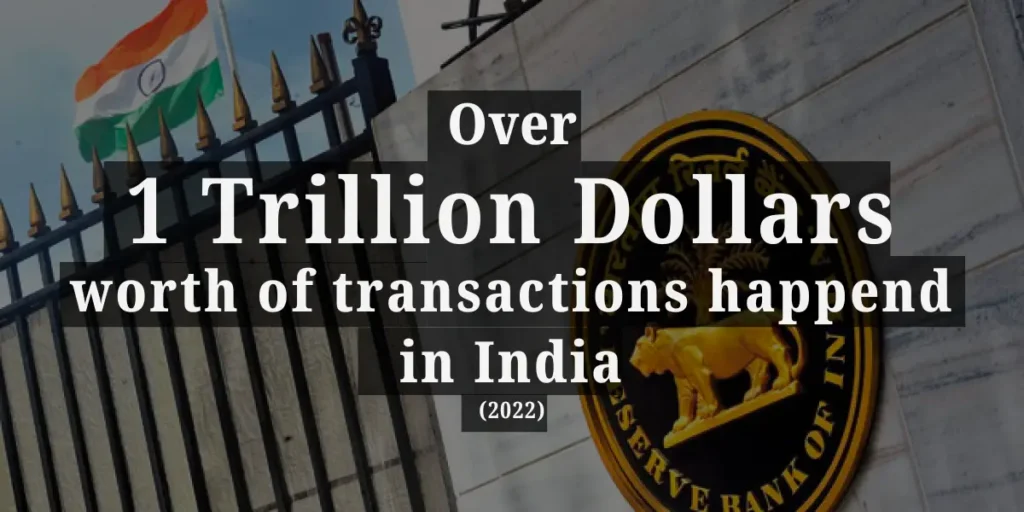
The 10 states with the most transactions in 2022, recorded by Worldline India, include Maharashtra, Kerala, Tamil Nadu, Karnataka, Delhi, Telangana, Uttar Pradesh, Gujarat, Andhra Pradesh and West Bengal. Leading UPI apps like PhonePe, Google Pay, and Paytm dominate both transaction volume and value.
Did you know?
According to the World Bank, India’s remittances reached approximately US$100 billion in 2022, surpassing China and Mexico.
In 2018, BMC (Brihanmumbai Municipal Corporation) decided to revive the cooperage bandstand in Colaba, Mumbai. They planned to digitize the bandstand’s structure with a QR Code. This QR Code revealed the details and archival information on the bandstand.
During the same year, Hindustan Petroleum Corporation Limited (HPCL) introduced a customer feedback initiative: ‘Talk To Us’. It helps customers interact and suggest improvements to the company by scanning a QR Code.
The initiative aims to enhance the company’s products and services.QR Codes have several roles to perform in Indian lives. So Indian marketers take hosts a wide spectrum of QR Code uses such as car insurance and fashion retail.
C. QR India: Facts and statistics
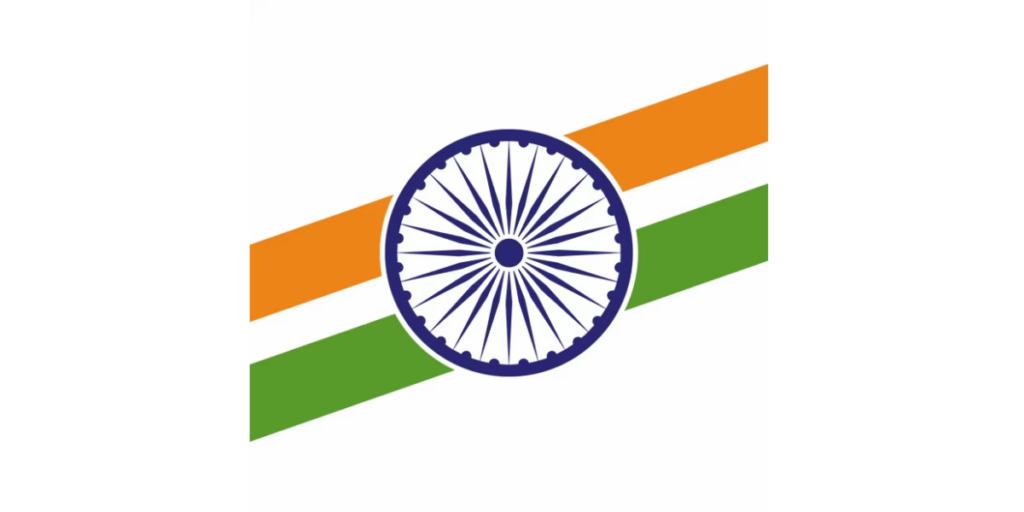
In India, QR Codes are revolutionizing the digital world, affecting everything from public services to payments.
Here is a thorough summary of their importance backed up with important information and figures:
1. Widespread adoption and impact
QR Codes have seen extensive use across India, driven in part by the COVID-19 pandemic. Key statistics include:
– Merchant acceptance: Over 9 million merchants across India now accept India QR Code payments. This reflects widespread integration from street vendors to large retailers. Source: CoinGeek
– Annual QR transactions: QR Code transactions in India amount to over INR 12 crore annually, highlighting their significant role in the economy. Source: businesstoday
2. UPI and QR Code integration
The integration of QR Codes into UPI platforms has revolutionized digital payments:
– Platform integration: Leading UPI platforms like Paytm, Google Pay, and PhonePe have incorporated India QRs, facilitating millions of transactions monthly. Source: inc42
– Transaction volume: QR Codes facilitate quick and secure payments directly from users’ bank accounts or digital wallets. Source: stripe
– Bharat QR Growth: By September 2022, Bharat QR Code acceptances had exceeded 4.8 million. Source: Statista
All these numbers indicate widespread QR Code adoption in India and the country’s increase receptivity to them.
3. Government initiatives in promoting QR Code adoption
– Digital India campaign: This campaign drives digital payments, including QR Code usage, aiming to create a digitally empowered society. Source: nic
– Bharat QR: Standardizes QR Code payments across merchant outlets, enhancing accessibility and standardization. Source: paynetpro
4. Key statistics and data: QR India
– Top QR Code usage countries: India is among the top three countries for QR Code usage, alongside China and Nigeria. Source: paynet
– Smartphone penetration: Rising smartphone usage in India has significantly contributed to increased QR Code adoption. Source: businesstoday
– Global market trends: The global QR scan payment market is expanding, with India playing a leading role due to its vast consumer base and technological progress. Source: paynet


D. Common Use Cases of QR Codes in India
Here is a list of 10 common uses of QR Codes in India:
1. Ticketing
Using QR Codes for ticketing is common now. Adding a QR Code to the tickets makes authentication a quick process.
I. Delhi Metro train tickets
In 2018, Delhi Metro Rail Corporation (DMRC) came up with QR Code-based payments at its IGI metro.
This was followed by the introduction of a QR Code-based ticketing facility through the Paytm Mobile App across all corridors in Oct 2023.
With this new feature, passengers can get mobile QR tickets on the Paytm app under the ‘Metro’ section, by simply entering the departure and arrival stations on the day of travel, DMRC said in a notification.
Passengers simply need to place their smartphone in front of the QR Code scanner at the Automatic Ticket Collection (AFC) gates at immigration stations to continue their journey
Notification, DMRC
Following this DMRC, in collaboration with Meta, introduced a WhatsApp Ticketing facility as well, where passengers can generate QR-based tickets right from their WhatsApp.
The WhatsApp feature allows metro travelers to communicate in both Hindi and English languages and serves 288 metro stations and 12 metro lines in the Delhi NCR, including the Gurugram Rapid Metro and Airport line.
II. Noida Metro train tickets
The smart cards of Noida metro’s aqua line will have a QR Code printed on them.
Passengers will be able to pay for their metro fare using the QR Codes on these smart cards.
Additionally, the metro tickets will have a QR Code too for check-in and check-out purposes.
Also, see how Delhi Metro’s heritage line allows QR Code ticketing.
III. Ahmedabad BRTS
Ahmedabad’s bus rapid transit system (BRTS) uses QR Codes to allow paperless ticketing.
Passengers just need to have BRTS app on their smartphone.
IV. BookMyShow
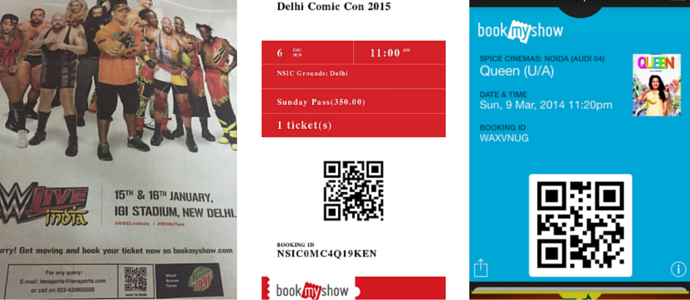
A popular movie ticket booking app, also adds a QR Code to its Passbook tickets.
V. IRCTC
India’s train ticket booking portal, adds QR Codes to its printable e-tickets.
Kolkata metro is set to introduce QR Code ticketing in 2017.
We are developing an app in which after paying online, a QR (Quick Response) code will be generated. Like smart cards or tokens, the passenger will need to just place their mobile screen close to a sensor of the smart gate to enter the platform.
Indrani Banerjee, Metro CPRO
2. Banking

In 2018, the Government of India launched India Post Payments Bank (IPPB) to provide financial services in rural areas of the country.
Each account holder of IPPB gets a QR Card with a QR Code on it. One can use this card to scan the QR Code and authorize the payment. This eliminates the need to remember the card’s PIN or password.
Also, post-demonetization in 2016, the Government of India launched the BHIM app to help people make digital payments easily.
Digital payments in India via UPI (Unified Payment Interface) stood at 10.56 billion in September 2023, with a total transaction value of Rs 15.8 trillion!
Notably, UPI QR Codes witnessed a remarkable growth of 79 percent (starting from an already substantial base) to reach 272 million (as per the June 2023 report).
3. Flights
The Airport Authority of India rolled out paperless boardings at the airport. The e-boarding pass with QR Codes eliminates papers in the whole boarding process.
The Ministry of Civil Aviation launched a paperless boarding process for air passengers on, December 1, 2022. It is called Digi Yatra.
The service uses a facial recognition system to check in passengers, in turn, eliminating the need for an ID card and boarding pass. The e-gate at the entry of the airport terminal will capture passengers’ faces.
Besides this, it will also capture the QR Code present on the air ticket. This QR Code serves as a link to all the flight information of a passenger.
The process will make boarding the flight easy and hassle-free.
4. Waste collection
First in 2017, then in 2018, waste collection via QR Codes hit India
In 2017, design students in Bangalore, India, developed an app to encourage residents to segregate their waste.
Then in 2018, the Municipal Corporation in Trichy also started using QR Codes in waste collection.
5. School Safety
In Jul 2018, an enterprise resource planning (ERP) and web solutions firm developed an app— Gateway to School.
It helps identify people visiting the school. The app identifies parents by making digital ID cards with a QR Code. So when parents visit the school, they scan this QR Code at the gate to enter the school premises.
Also, the system generates an exit code which is sent to parents’ phones.
In 2017, Delhi Police also launched an app for women’s safety.
Also, see how Delhi University is using QR Codes on admission forms to help students.
6. Newspaper Advertisements
Despite the growth of online and mobile media, print media is still big in India.
Brands continue to make heavy investments in newspaper ads. Brands are also aware of the growing importance of smartphones. Thus, an increasing number of newspaper ads now include a QR Code.
QR Codes connect readers from the print ad to dynamic online media.
Marketers use QR Codes in advertisements to engage readers with their marketing content. Brands such as:
- State Bank of India
- LG
- Spykar
- KAFF
- Lavasa
- Cox & Kings
- Symphony
- Shoppers Stop
- The Collective
- DHFL
- SimplyMarry
- Advanced Hair Studio
- Intec
- Sikka Group
- Manyavar
have all used QR Codes in print media marketing.
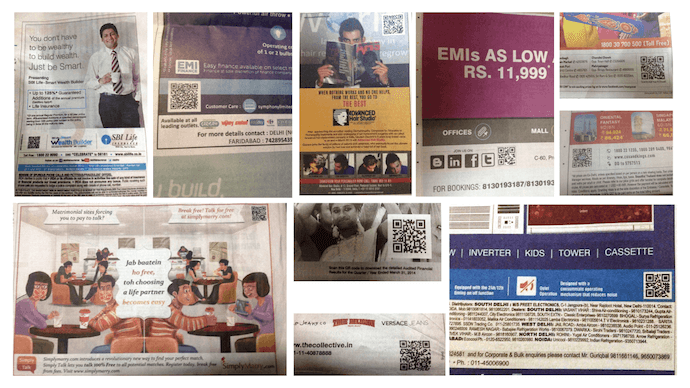
7. Newspaper Articles
India witnessed its first-ever AI-powered camera campaign for NutriChoice. The campaign kickstarts with an innovative print campaign, which creates a Mixed Reality-like experience with just a smartphone
The newspaper ad had Ranveer Singh holding a packet of NutriChoice biscuits along with a QR Code. With this innovative campaign, consumers can scan this QR Code on their smartphones leading to experiencing a video from Ranveer Singh within their smartphone camera experience, without the need for app downloads or webinars.
See the video here.
One of India’s leading English newspapers, The Times of India, featured a QR Code in an article. The QR Code connected readers from snippets on paper to full-length articles online.
8. Tourism
New Delhi Municipal Council is planning to introduce QR Code-based signage. This will apply to all heritage sites and monuments that fall under NDMC’s jurisdiction.
This is a first-of-its-kind initiative to help visitors explore the city. Though the specially designed boards will have basic details about the heritage site, visitors can know more about it by scanning the QR Code
OP Mishra, Director Project (as reported in TOI article)
New Town Kolkata Development Authority (NKDA) added QR Codes at locations across Kolkata. The QR Codes will allow tourists and citizens to navigate using Google Maps.
We will put this code on display at different locations of New Town, like police stations, the Hidco building, Eco Park, Rabindra Tirtha, etc, and also upload it on the website. We are working on developing New Town as a smart city and this is another step towards that goal
Debasis Sen, NKDA Chairman (As reported in TOI article)
Kerala Tourism recently introduced a QR Code-aided tourism search. This will allow tourists to navigate and learn more about interesting places nearby. Learn more.
The Airports Authority of India introduced a QR Code-aided tourism search. This will allow tourists to navigate and learn more about interesting places nearby.
9. Identification and Authentication
India’s latest identification initiative, the Aadhaar Card, also has a QR Code on it. This will allow businesses quick authentication of user data by scanning the QR Code on the card. The QR Code on the updated Aadhaar Card stores the information of the ID holder including-
- Name
- Fathers Name
- DOB
- Address
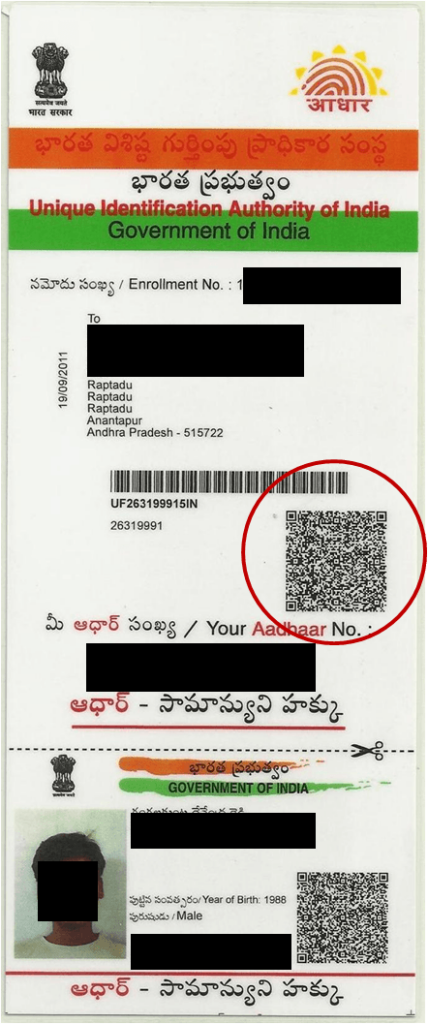
Jadavpur University (JU) in India has introduced QR Codes on each degree certificate. This serves as a security feature to make it difficult to duplicate certificates.
The QR Codes on the certificate will contain all the necessary data of the student. It will contain the date of degree awarded, the registration number, the department, acquired marks, and all the other necessary data. This is to prevent distribution of any fake certificate
Satyaki Bhattacharyya, Controller of Examinations (as reported in DNA article)
Whatsapp, the most popular messaging app in India, recently launched Whatsapp Web. The app is accessible only by scanning a QR Code.
Consumer electronics product companies Sennheiser and HP use QR Codes on their packaging. This allows buyers to verify the authenticity of their products.
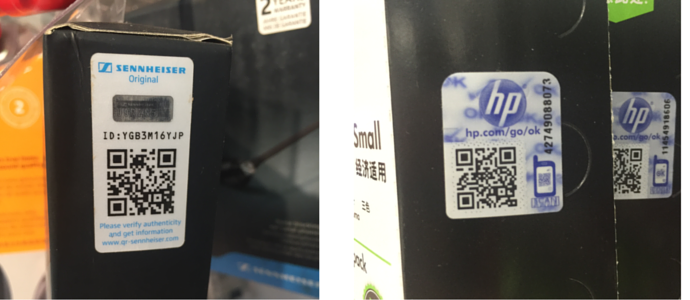
In 2018, the Road Transport Ministry of India announced the use of Digilocker which allows citizens to carry their driving licence on their smartphones.
Also, see why City administration added QR Codes on Ganesha idols during Ganesh Chaturthi—a Hindu festival.
10. Payments
The State Bank of India’s Anywhere App allows account holders to transfer money. This is like a mobile money transfer using PayPal at merchant stores. The app generates a QR Code. The recipient of the money needs to scan the QR Code using his/her app to receive the money.
Mobile wallet app Paytm also allows peer-to-peer payments. It also allows user-to-merchant payments using QR Codes.
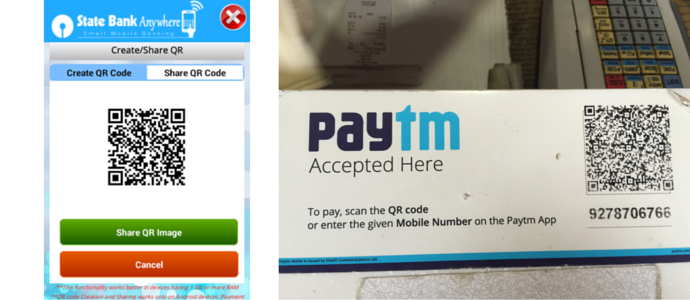
Also, read how QR Codes have made their way on electricity bills.
Other banks and mobile wallets are likely to follow suit.
11. Mobile App Downloads
Using a QR Code, brands can redirect customers to App Store pages to get them to download their mobile app. Brands such as Samsung, AirAsia, Gaana, Globus, Big Fish, and HDFC are using such QR Codes in India.
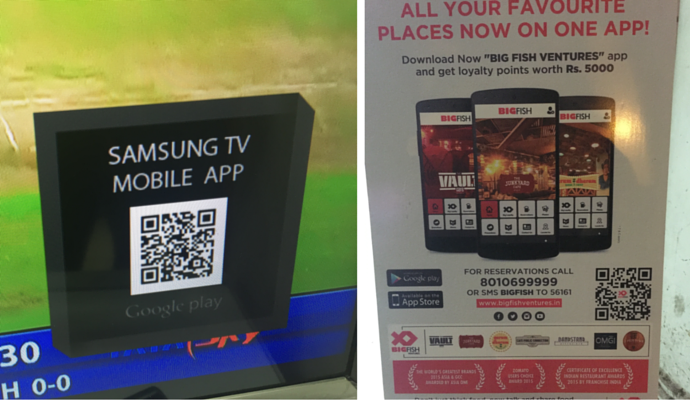
12. Product Packaging
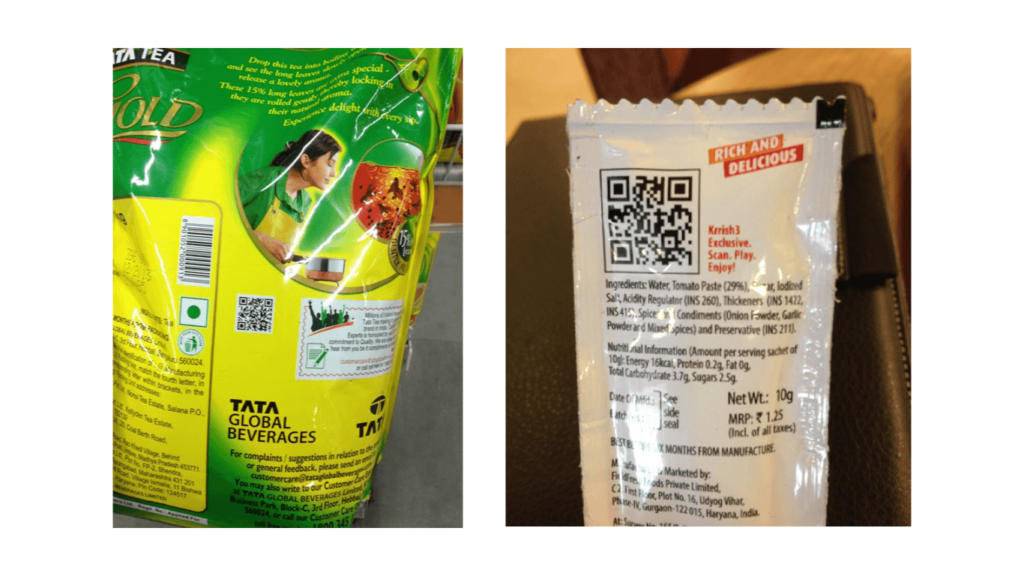
QR Codes in product packaging are very common. These QR Codes redirect users to extra information or promotional offers.
Brands such as Del Monte, Godrej, Amul, Dabur, and Tata Tea have adopted QR Codes to engage consumers.
Also, see why QR Codes make sense in India.
13. Inventory Management
QR Codes were first invented in 1994 by the Japanese company Denso Wave Corporation. The intention was to use them for inventory management in the automobile industry. India now is not far behind. The use of QR Codes in the transportation and management of products and product cartons is high.
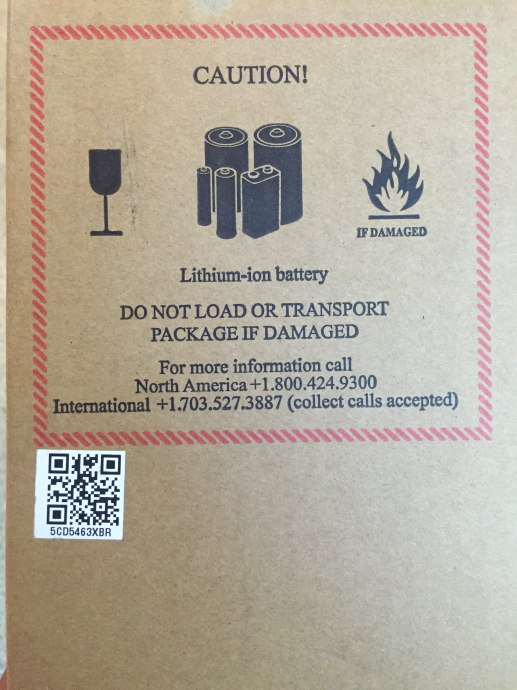
14. Detailed Information
Many brands, Govt organizations, and businesses use QR Codes in print marketing campaigns. This allows users to get detailed information about a promotion, initiative, or product.
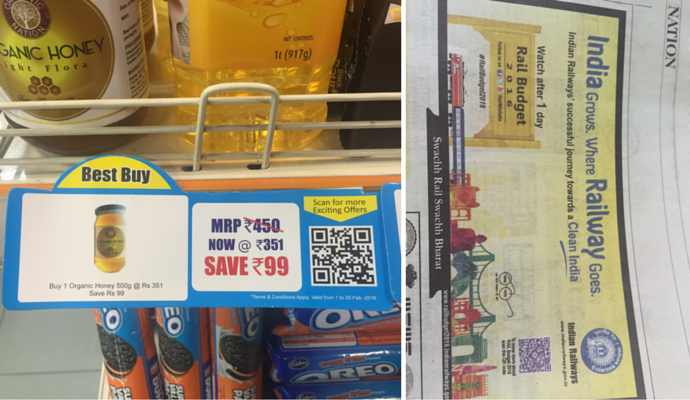
15. Identify Abandoned Vehicles
QR Codes are also helping the Andhra Pradesh police identify abandoned vehicles. The Andhra Pradesh police developed a Property Identification and Networking System (PINS). The app contains details pertaining to the vehicle. The information is then encoded in the QR Code and posted on vehicles and notice boards. This makes the process of identification easy.
Similarly, first Ranchi added QR Codes to public transport. And then Mumbai, Mysore, Bangalore, and Kothagudem also took similar steps.
16. Shorten lines at ticketing counters
Western and Central Railways a paperless ticketing system via QR Codes. The Railway’s in-house app-UTS M- ticketing-generates a QR Code serving as a ticket.
Read more here: Mumbai local trains to take the QR Code ticketing route
17. Guarantee meat safety
In Kollam, Kerala, live broiler chickens are set to bear QR Code tags. The project is a brainchild of the Venad Poultry Farmers Producers Limited. The QR Codes will link to information such as:
- The food fed
- The medicines given (steroids, if any)
- The signature and address of the farmer who reared the chicken
18. On Certificates
To curb the circulation of fraudulent degrees, Mumbai University adopted QR Codes. These QR Codes will help authorities verify the authentication of the degree. In 2015, The APJ Abdul Kalam Technical University, Lucknow adopted QR Codes.
Apart from authentication of certificates, QR Codes also provide easy access to documents.
And the list of QR Code uses in India doesn’t end here. Here are some more ways the country is using QR Codes:
1. In 2016, the Madhya Pradesh Secondary Education Board adopted QR Codes on certificates. Class 10 and 12 certificated would each contain a unique QR Code. When scanned, the QR Code would lead to the student’s original mark sheet.
Read more here: Education Board in India to help students share documents via QR Codes.
2. The Road Transport Ministry of India planned uniform driving licenses and vehicle registration certificates to be launched in Jul 2019. The new DLs will have a QR Code on them. This QR Code will help Traffic enforcement officials access driver’s details with a simple scan.
Read more here: India launches uniform driving licenses and vehicle registration certificates.
3. Punjab Police collaborates with a tech company to create an app—Parksafe—that helps curb the issue of incorrect parking
4. In Jan 2017, Karnataka Police launched QR Codes for effective patrolling
QR Code is a cost-effective marketing tool to engage consumers. There’s been an increase in businesses using QR Codes in their promotional material. This, in turn, has made consumers aware of what QR Codes are and how to scan them.
Now, the thing to look forward to? How brands and marketing agencies will leverage this innovative technology for their promotions.
E. Why QR Codes Resonated with Indian Users
QR Codes gained immense popularity in India due to their simplicity, resonating with a large and diverse user base.
Here’s a deeper dive into the factors that contributed to their success:
Low Barrier to Entry: Unlike other digital payment methods requiring smartphones or internet access, QR Codes only require a basic camera on a phone. This accessibility made them usable by a wider population, including those in rural areas or with limited technical knowledge.
Quick and Easy Transactions: QR Code payments are swift and convenient. Users simply scan a code to initiate the transaction, eliminating the need for manual cash exchanges, card swipes, or entering long account details. This speed and ease were particularly appealing in a fast-paced society like India.
Offline Functionality: Unlike many digital payment methods reliant on internet connectivity, QR Codes can function offline. This was a game-changer in areas with patchy internet access, ensuring transactions could happen seamlessly even in remote locations.
User-Friendly Interface: QR Codes are visually intuitive. Anyone can understand the concept of scanning a code to initiate a payment. This user-friendliness transcended language barriers and literacy levels, making it accessible to a broader audience.
Versatility Beyond Payments: QR Codes offer more than just payment solutions. They can be used to share information, access menus at restaurants, download apps, and even verify product authenticity. This multi-functionality added value and further enhanced their appeal.
F. How to create QR Codes in India

Creating QR Codes in India is very easy! Here’s a quick guide:
- Choose an online QR Code generator: There are many free and paid options available. Scanova is a popular QR Code generator in India that offers both free and paid services. You can even go for Canva’s QR Code Generator (if you’re a Canva user and you want to integrate your QR Code on a predesigned project).
- Select your QR Code type: Most generators offer various options like website URL, vCard (digital business card), plain text, email, message, Wi-Fi connection details, and more.
- Fill in the information: Enter the relevant data depending on your chosen QR Code type. For instance, for a URL code, you’d enter your website address.
- Customize (optional): Some generators like Scanova allow you to personalize the QR Code’s appearance by changing colors, adding a logo, or even modifying the shape (depending on the generator).
- Generate and Download: Once you’re satisfied, click on the “Generate” or similar button. The QR Code will be created, and you can download it as an image file (usually JPG or PNG).
Additional Tips:
- Test your QR Code: Before deploying your QR Code, ensure it scans correctly using a QR Code scanner app on your smartphone.
- Consider using a high-quality image format: Opt for a format like PNG to ensure clarity when printing the QR Code.
- Choose the right size: The QR Code size should be appropriate for the intended use. A smaller code might not scan well from a distance.
By following these steps, you can easily create QR Codes in India to add a digital touch to your marketing materials, business cards, or even personal projects.
G. Choosing the Right Generator:
The best QR Code generator for you depends on your specific needs. Consider factors like:
- Customization requirements: How important is it to personalize the look and feel of your QR Codes?
- Features needed: Do you require analytics tracking, bulk generation, or advanced code types?
- Budget: Free options are available, but paid plans often offer more features and customization.
Why choose Scanova?
Scanova is trusted by many big brands that have successfully implemented their QR Code campaigns using the QR Code generator tool.

Scanova’s QR Code generator caters specifically to businesses looking to leverage QR Codes for marketing and data analysis. It offers features like scan tracking and analytics, letting you see how many people scan your code and where they come from. This valuable data helps you measure the effectiveness of your QR Code campaigns.
Scanova offers GDPR compliance and ISO 27001:2013 certification, ensuring your data is protected with industry best practices.
Additional Features: Scanova boasts a range of features that can be particularly useful for businesses, such as:
- Lead generation: Capture contact information directly through QR Code scans.
- Landing page creation: No need for a separate website; Scanova can generate mobile-friendly landing pages for your QR Code campaigns.
- Integration with tools: Connect Scanova with Google Analytics for even deeper data insights.
What people say about us
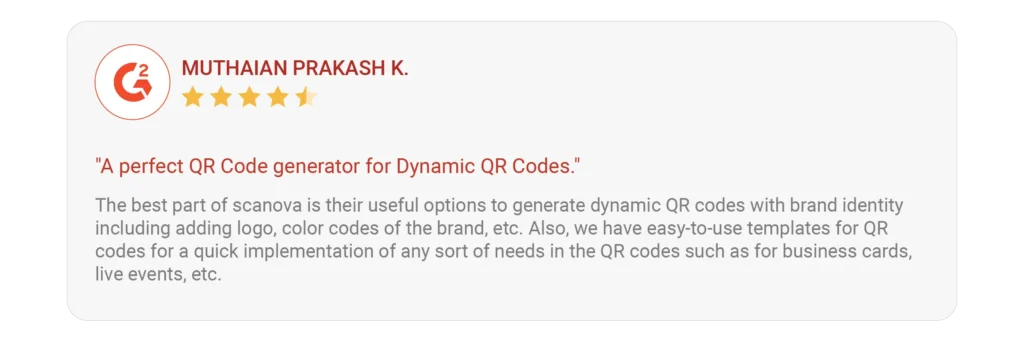
H. FAQs: QR Codes in India
1. What are QR Codes and how do they work?
QR Codes (Quick Response Codes) are square-shaped barcodes that contain information readable by smartphones and other devices with QR Code scanner apps. When scanned, the code directs users to a website, displays text, shares contact details, or performs other actions.
2. How popular are QR Codes in India?
QR Codes have seen a significant rise in popularity in India, particularly after initiatives like Bharat QR for digital payments. They are widely used for contactless payments, accessing menus, sharing Wi-Fi details, and marketing campaigns.
3. What are the different types of QR Codes used in India?
There are various QR Code types available, but some commonly used ones in India include:
- URL QR Codes: Link users to specific websites or landing pages.
- vCard QR Codes: Share your digital business card with contact information.
- Payment QR Codes: Facilitate cashless transactions through platforms like Bharat QR and UPI.
- Social Media QR Codes: Connect users directly to your social media profiles.
4. How can I create a QR Code in India?
Many free and paid online QR Code generators are available in India. Popular options include Scanova’s QR Code Generator and Canva’s QR Code Generator.
5. What are some things to keep in mind when using QR Codes in India?
- Test your QR Code: Ensure it scans correctly before deploying it.
- Use a high-quality image format: Opt for PNG for clear printing.
- Choose the right size: The code should be scannable from the intended distance.
- Consider dynamic QR Codes: For frequently updated information, explore dynamic codes.
6. Where can I use QR Codes in India?
The applications of QR Codes are vast. You can see them on:
- Product packaging for accessing product information.
- Restaurant menus for digital ordering or viewing full menus.
- Billboards and advertisements for quick website access.
- Business cards for sharing contact details electronically.
- Shop displays for offering discount coupons or promotions.
7. Are QR Codes safe to use in India?
Generally, QR Codes themselves are safe. However, be cautious when scanning codes from untrusted sources. Avoid clicking on suspicious links or downloading unknown files through QR Codes.
Summing Up
QRs are revolutionizing how India interacts with its customers and conducts business. They are leading India’s digital transformation and significantly increasing efficiency and convenience.
We appreciate you joining us as we investigate the evolving significance of QR Codes in India.
Keep checking back for additional updates and insights on the cutting-edge technologies that are advancing our world.

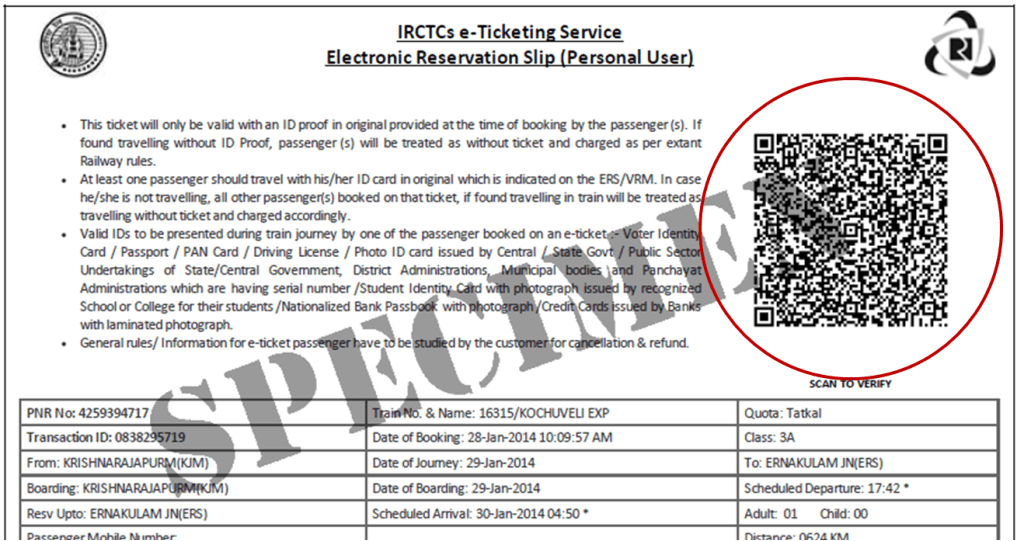
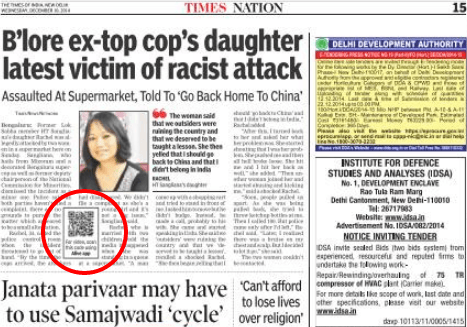
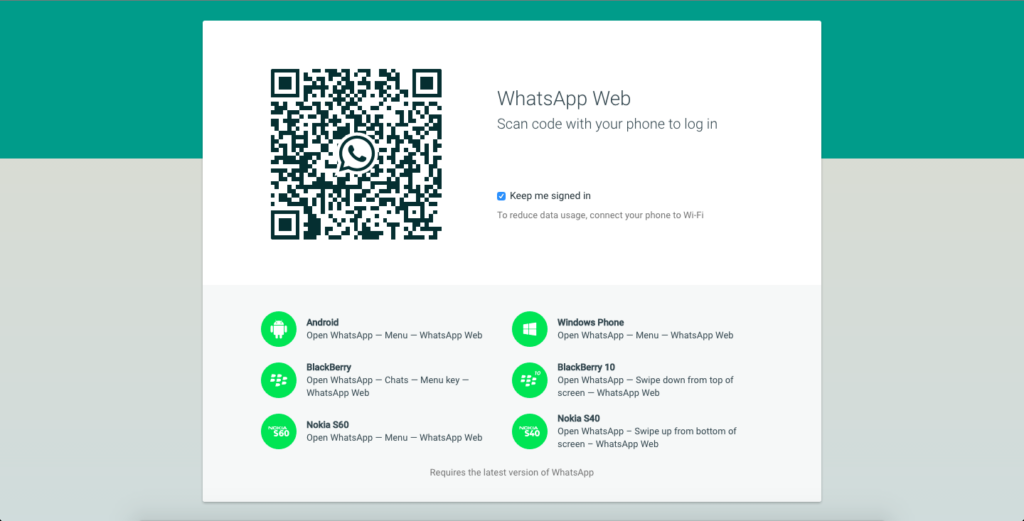



What will be density of the QR code in the aadhaar card?? I mean in terms of Mil’s whats may be the value?
Hi Yeshwanth.
The size and density of a QR Code is defined by its version number (1-40) and number of modules. These are dependent on three factors: Error correction, character type and amount of data. With increasing error correction and amount of data, the size and density of the QR Code increases. Here are details of the capacity of each version of a QR Code: http://www.qrcode.com/en/about/version.html. The Aadhar Card (assuming high error correction and alphanumeric character type) falls in the version range 11-20.
Hope this was helpful.
Recently I bought Brother QL-700 printer which is a thermal printer. I have database and information are printed on the card which has QR Code too. The QL-700 printer prints slightly poorer quality and some qr code are not recognized by smartphone etc. Some can be scanned successfully. Whereas normal printer gives perfect QR Code.
1. Should I go for professional qr code reading which we can see in big stores.?
2. Experienced techie advice me to store less information in QR Code. Is it better with less information?
3. Gautum ji, can you please help me make by QR Code work better.
Tashi,
It is true that the lesser the information in the QR Code, the less dense it will be and the scannability of the QR Code will definitely be higher (assuming the printing area remains constant). However, if your QR Code is likely to get damaged easily (such as on a packaging label), then increasing error correction can increase scannability. The key question here is – what information are you storing in the QR Code? For example, if the information is a URL, you can use a shortened URL instead to decrease the size of the QR Code.
Hope this was helpful.
Thank you Gautaum,
I am storing information like RC No and address. My printer gives printing with slightly poor quality. Some QR Code is scanned successfully. Some not. Whereas on the screen it scans perfectly. I have reduced the amount of information in QR Code.
My another question is hand held QR scanner will scan better than smartphone?
Hi Tashi,
I think the problem might be in the printer. Smartphone scanners are usually as good as handheld scanners. If the prints are of low quality then even handheld scanners will not be able to scan them. You should try to either check your printer with the manufacturer for any faults or invest in a better one.
Hope this helps.
i want to decode a QR code using a matlab code.
i have used a java package of Zxing in it.
but that code is only able to detect QR code offline i.e. stored images with good quality which i have generated from your links.
i need to detect in real time using webcam or camera of any smartphone connected to laptop.
which i tried but doesn’t work
please help.
Resume – QR codes getting popular, but may be good for applying in a tech company
Yes. Job applicants to add QR Codes to Resumes. However, there are 3 important things to note while adding QR Codes to your resumes. Read them here: https://scanova.io/blog/qr-code-on-resume/
[…] at nearly 50 large service providers potentially reaching 300 million consumers. Besides payments, other large-scale QR deployments include the Aadhaar identity project, ticketing, media ads, brand engagements and product […]
[…] at nearly 50 large service providers potentially reaching 300 million consumers. Besides payments, other large-scale QR deployments include the Aadhaar identity project, ticketing, media ads, brand engagements and product […]